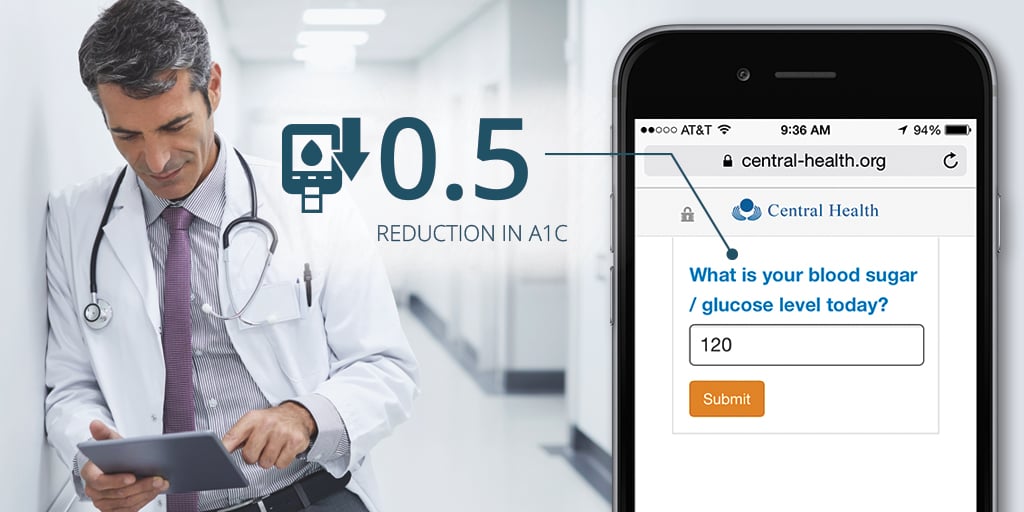Because chronic conditions such as diabetes and asthma have no known cure, a lifetime of management is necessary to ensure patients get the most out of their everyday lives. Text messaging can play an important role in managing these chronic conditions, providing benefits including:
1. Support Self Care
Most patients don't have immediate, 24-hour access to a nurse or doctor - a big part of their health care management is either self-administered or performed by family members with no medical background.
There is no question that patients benefit from consistent and timely guidance and support; one way to provide that guidance is through text messaging. Information such as nutrition tips, healthy recipes, and exercise recommendations can be sent automatically to the patient’s mobile device, allowing patients and their family members to receive practical and relevant information on a regular basis.
2. Adherence to Treatment
Up to 50% of adults with chronic conditions don’t take their medications as prescribed, often because they simply forget.* This same research demonstrates that people are significantly more likely to take their medications when prompted via text message.
When people are constantly checking their mobile phones, it’s hard to miss a text message, especially one as important as a health care intervention.
3. Improved Accountability
Managing diabetes or asthma involves discipline. Unfortunately, some patients fail to take care of themselves; instead, they often depend on health care professionals for treatment.
Text messaging can support self-management by sending reminders, alerts, or health surveys to securely monitor key health indicators. For diabetes management, our own data suggests that securely monitoring key health indicators has helped improve a1c rates by 0.5 points or more.
As a result of these prompts, patients become more involved in their own care and develop a heightened level of personal accountability.
4. Reach At-Risk Populations
According to Scripps Health, high-risk Latinos with type 2 diabetes experienced improvement in glycemic control when a text message-based program for self-management was introduced.* In general, at-risk groups with lower socioeconomic status are harder to reach due to the limitations of their access to technology, but mobile phones are both ubiquitous and affordable enough for virtually anyone to have one. Given that text messaging is the number one cell phone activity, it is an effective means to communicate with a diverse group of patients.
5. Personalized Content
According to the Pew Research Center, 95% of adults own a cellphone, with texting being the most widely used service.* Furthermore, text messages boast a 99% open rate, with most messages read in under 5 seconds.* It is not hard to imagine that health-related text messages, then, are quickly read and absorbed.
Text messaging represents a great opportunity to deliver personalized content – based upon factors such as condition, lifestyle and habits – and send it to the patient at precisely the moment they need it. The delivery of timely and relevant information through a channel that naturally gets attention can make a marked difference in the management of chronic conditions.
Text messaging is a low-cost, yet effective tool to improve ongoing health care management for diabetics and asthmatics. While care must be taken when developing a text message program – to address factors such as regulatory compliance and consent – the positive impact to outcomes is well worth it.
*Thakkar J, et al., “Mobile phone text messages for medication adherence in chronic disease: a meta-analysis,” JAMA, 2016.
*Scripps Health, “Text Messages Helpful in Controlling Diabetes.” * “Mobile Fact Sheet,” Pew Research Center, 2018.
*https://medium.com/bsg-sms/50-texting-statistics-that-can-quench-everyones-curiosity-even-mine-7591b61031f5




